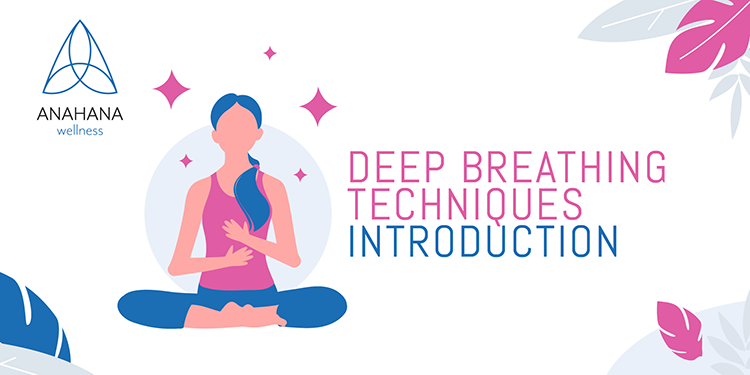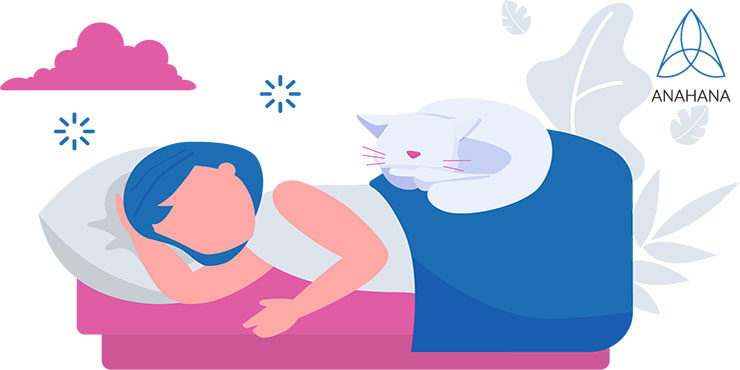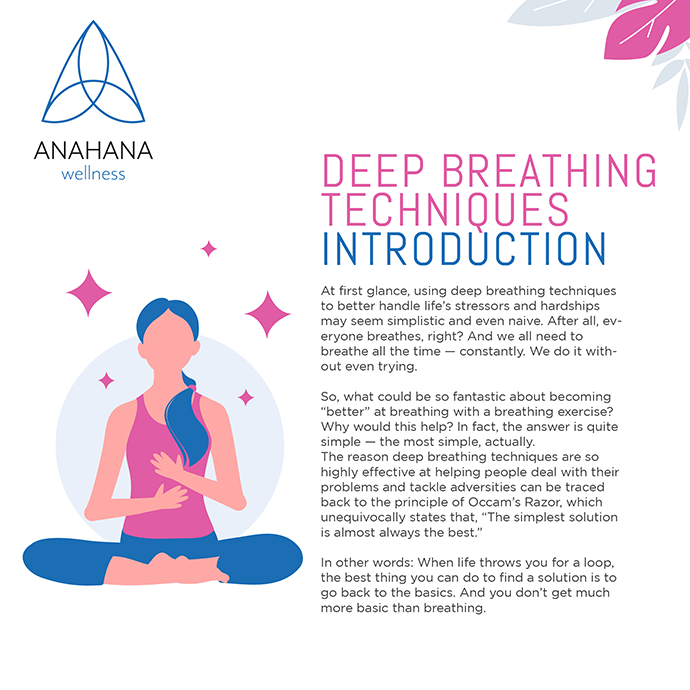Wim Hof Breathing Method
The Wim Hof Method is a three-step process developed by the legendary Iceman. Wim Hof has set numerous World Records about his ability to withstand...
Do you want to learn what deep breathing techniques are all about? How to handle life’s stressors and hardships? Then you have come to the right place!
 Breathing techniques are one of the most effective tools to handle life’s stressors and hardships better. Done properly and with varied approaches, breathing techniques help to improve nearly all aspects of life. And it all boils down to inhaling and exhaling, in and out in the correct manner.
Breathing techniques are one of the most effective tools to handle life’s stressors and hardships better. Done properly and with varied approaches, breathing techniques help to improve nearly all aspects of life. And it all boils down to inhaling and exhaling, in and out in the correct manner.
This is a free, fast, and efficient way to see positive results in both physical and mental health. The following areas can be improved using breathing techniques:
Breathing techniques help to relax and bring ease to the body and mind. It is a way to release tension from the body and clear the mind.
The stress of work, family, finances, and other responsibilities have a way of building up over time. Breathing techniques act as a release valve for reducing stress and this buildup of anxiety. Promoting improved mental clarity and a better work-life balance, resulting in relaxation, helping you to relieve stress.
Under stress it is difficult to breathe, however, by using relaxation techniques and focusing on breathing, it is possible to alleviate these difficulties.
Studies show that weight gain is positively correlated with the buildup of daily stressors in one’s life. The more stress there is, the more likely some people might be to put on excess weight due to heightened cortisol and adrenaline release.
The good news is that once the stress is addressed, it becomes easier to achieve and maintain a healthy, comfortable weight. Normal stress levels will naturally balance the eating patterns as well as levels of physical exercise, whether it’s absent or too prevalent in one’s life. Breathing exercise allows tackling unwanted weight without the need for fad diets or other weight loss gimmicks since it’s an excellent stress management activity.
 To round off the list of core benefits, implementing deep breathing exercises have also been shown to help with sleep. Those who have chronic sleep problems such as insomnia have been shown to benefit from slow, profound breathing before bed. Others who may only have occasional trouble sleeping have also seen improvement.
To round off the list of core benefits, implementing deep breathing exercises have also been shown to help with sleep. Those who have chronic sleep problems such as insomnia have been shown to benefit from slow, profound breathing before bed. Others who may only have occasional trouble sleeping have also seen improvement.
Profound breathing exercises run the gamut from fast and quick breathing practices to long and complex meditations. There isn’t a “one-size-fits-all” exercise. Likewise, there are no stringent guidelines as far as “how to breathe” day to day.
Rather, proper breathing is something to be constantly focused on and improved upon. It’s a tool that one can harness in a variety of ways to achieve a number of positive outcomes.
 Here is a short summary of what some of the breathing techniques can help with and how to perform them.
Here is a short summary of what some of the breathing techniques can help with and how to perform them.
Square Breathing (AKA Box Breathing): The Square Breathing exercise is a very simple breathing method that follows a “square” framework. Breathe in to the count of four, hold your breath to the count of four, breathe out to the count of four, hold to the count of four, and repeat this breathing pattern.
4 7 8 Breathing & Variations: Breathing exercise developed by Dr. Andrew Weil. Breath in through your nose to the count of four, hold to the count of seven, exhale slowly to the count of eight. Repeat.
Mindful Breathing: Aware breathing that promotes mindful awareness throughout each in and out breath, working towards achieving mindfulness.
Paradoxical Breathing: During normal or healthy diaphragmatic breathing, the diaphragm moves downward with each inhale. Paradoxical breathing occurs when the diaphragm (paradoxically) moves in the opposite direction (upward) with each inhale.
Diaphragmatic Breathing: Deep breathing exercise that promotes taking deep inhales through abdominal breathing. As opposed to shallow breaths from the upper portion of the lungs. With this technique, the diaphragm pushes downwards with each inhale, as opposed to upwards. Diaphragmatic breathing also activates The Sympathetic Nervous System or the Fight or Flight Response.
Yoga Breathing: Coincides with one’s yoga practice. Each breath aligns with a posture and/or movement.
Belly Breathing: A form of breathing that promotes taking breaths from deep in the abdomen (diaphragm). With each breath, your belly rises and falls.
Ujjayi Breathing: A type of yogic breathing pattern that translates as “victorious breath” and promotes the constriction of the back of the throat during nasal inhales and exhales.
Alternate Nostril Breathing: Relaxing technique that dictates breathing in through right nostril only, then out through the left nostril, and vice versa while keeping your mouth closed.
Pranayama Breathing: Pranayama means “breath control” in the practice of yoga. Pranayama coincides with yogic movements and postures.
Pilates Breathing: Coincides with one’s Pilates practice. Each breath aligns with a posture and/or movement.
Holotropic Breathing: A breathing technique developed in the 1970s and used to achieve a therapeutic, altered state of consciousness. Also called pursed lip breathing with relaxation, is a simple breathing method that can help relieve shortness of breath. When you breathe in, slowly count to two. Then, purse your lips as if you were going to whistle and breathe out slowly for a count of four. Repeat this pattern until you feel your breathing return to normal.
Wim Hof Breathing: Controversial technique developed by Dutch extreme athlete “The Iceman” (Wim Hof) to help individuals achieve an altered state.
Buteyko Breathing: Breathing exercise developed by a Ukrainian medical professional to help those with respiratory conditions such as asthma.
Kapalabhati: Technique that uses an alternate breathing approach: Relaxed, longer inhales mixed with shorter exhale “bursts”.
Pursed lip breathing: Breathing with pursed lips helps with relaxation. It is a simple breathing method that can help relieve shortness of breath. Inhale slowly to a count of two. Then, purse your lips as if you were going to whistle and breathe out slowly for a count of four. Repeat this pattern until you feel your breathing return to normal.
The exercise or breathing technique can help with a number of problems. They can help promote natural calm when experiencing stress, anger or anxiety as they help to stay composed.
Breathing exercises benefit concentration at work (focus breathing) or help fall asleep during moments of insomnia and restlessness.
The best way to practice deep breaths is to simply take a pause for a short period of time and focus on breathing and only breathing. Close the eyes, relax the body, and take one deep breath in — from as low in the abdomen as possible.
Breathe this breath in slowly, letting the abdomen get bigger and bigger. One there is no more space for air, slowly begin releasing the air in an out breath. Repeat as needed.
Anyone can use these techniques to reduce stress, help with anxiety, and sleep better. It is the best, safest, and most holistic technique for dealing with life’s stressors that is completely free of charge and accessible.
Breathing techniques and exercises bring calm and help with anxiety by reverting the body to a state of relaxation. The best breathing exercises engage the diaphragm and focus on breaths that flow slow and steady.
Diaphragmatic breathing reduces stress because it produces the opposite effect of “stressed breathing.” “Stressed breaths” or paradoxical breathing tends to be shallow, short, and fast.
This type of breathing only allows short bursts of oxygen to the body. Conversely, diaphragmatic breaths are deep, long, and slow. This allows more oxygen to flow throughout the body and slows the heart rate.
It all depends on the goal. There are dozens of different breathing techniques to select from and the best way to pick the right one is to speak to a trained practitioner. Beginners should aim to start with something simple and short, building up the practice length and complexity as they progress.
5 Benefits of Square Breathing
Self-Regulation of Breathing as an Adjunctive Treatment of Insomnia - PMC
10 Breathing Exercises to Try: For Stress, Training & Lung Capacity
Diaphragmatic Breathing Exercises & Benefits


The Wim Hof Method is a three-step process developed by the legendary Iceman. Wim Hof has set numerous World Records about his ability to withstand...

Even though we are all breathing constantly, most people do not practice diaphragmatic breathing, which is how to breathe properly. The benefits from...

Buteyko is a method of breathing that decreases the respiration rate, that is reducing the number of breaths taken each minute to slow the breathing...